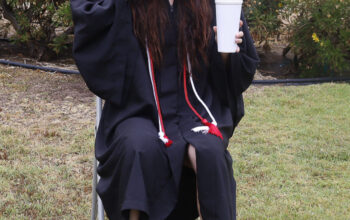Hispanic, Latino, Latinx, Immigrant and Brown: I am all of that and more. I am proud to identify and share in the rich history that represents Hispanic Heritage culture in the United States and around the world.
“We draw our strength from the very despair in which we have been forced to live. We shall endure.” – Cesar Chavez
I was born in El Salvador, in the city of San Salvador, the capital. By the age of three, my parents fled the country due to an ongoing civil war. They arrived in California as immigrants – my father was granted a green card due to his employer sponsoring our family. I was raised in Arleta, and went to predominantly Hispanic schools. The San Fernando Valley was a melting pot; it’s where I learned about who I identified with and where I had come from.
I witnessed our peoples’ warmth, language and culture in our neighborhoods, street corners and in homes through the sharing of meals around the dinner table.
According to the U.S. Census Bureau and the Pew Research Center, there are roughly 62.1 million Hispanics in the United States as of 2020, making up 19% of the nation’s population.
Hispanic language and culture has existed longer than the founding fathers of the United States. The discovery of a new world by Christopher Columbus in 1492 ushered in new generations of Spanish people who mixed and created their own culture, traditions and values as they settled in North America.
Today, Americans observe National Hispanic Heritage Month, from Sept. 15 to Oct. 15.
National Archives said “The observation began in 1968 as Hispanic Heritage week under President Lyndon Johnson, and was expanded by President Ronald Reagan, in 1988 to cover a 30-day period. It was enacted into law on August 17, 1988.”
We acknowledge and celebrate Hispanic Heritage Month to honor the past and present voices in the community whose contributions have paved the foundation and to those who continue to fight in bringing social and justice reforms to our communities.
I didn’t have firsthand experiences like my parents did growing up in El Salvador, learning the language and culture, living among their own countrymen. Growing up, I was an immigrant in a new country that had no memory or experiences about my birthplace. I learned the English language, played American sports and watched American TV shows. In my mind, America was my country.
But behind the scenes, the new life I was experiencing in the United States came at a price; a price my parents had to pay. They left behind their aging and ill parents, family and livelihoods without knowing the outcome or risk that lurked as they traveled over 3,000 miles by foot, bus and train. Through their struggles and hard work, they managed to provide an education, shelter and a better way of life.
According to research from the University of Georgia, “The Hispanic market is the largest minority in the U.S. and continues to expand. The group’s spending power grew to $1.9 trillion in 2020, an increase of 87% from 2010.” Hispanic communities are growing at higher rates than whites, African-Americans and Asians. With this growth comes new opportunities in education, politics and the economy.
And, another report by the U.S. Census states, “Hispanic voter turnout in 2020 was 54%, compared to 48% in 2016.”
We’ve proven that we’re good for business and local communities benefit from our buying power. Our presence is felt during local, state and federal elections. Hispanic culture is woven in the very fabric that makes up the United States.
The future for Hispanic Americans is ripe and ready to be harvested. We must continue to move the needle forward and fight for better social, economical and healthcare equalities for all.
Today, I am thankful for their sacrifice and to our Hispanic Heritage and the leaders whose shoulders we stand on. It’s a great responsibility and honor to carry that legacy with me and to show the next generation how far we’ve come, but the work is still not done.
Campus Events
There will be a Day of the Dead event which will be held on Nov. 1.



